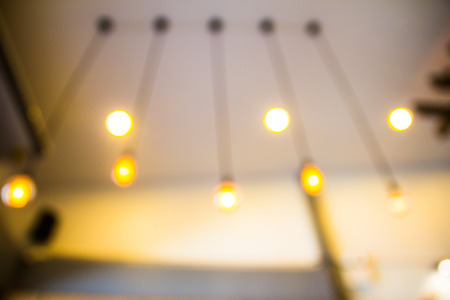Understanding Modern American Interior Styles
When selecting the ideal light fixtures for modern American homes, it is essential to first understand the prevailing interior design trends across the United States. Over recent years, American homeowners have increasingly gravitated toward styles such as Mid-century Modern, Minimalist, Industrial, and Transitional. Each of these aesthetics not only influences the choice of furniture and decor but also plays a critical role in determining suitable lighting solutions. For example, Mid-century Modern interiors often feature clean lines and organic forms, favoring sleek pendant lights or sputnik chandeliers with metallic finishes. Meanwhile, Minimalist spaces prioritize functionality and understated elegance, making recessed lighting or simple LED track systems highly desirable. Industrial designs embrace exposed bulbs and raw materials like black steel or aged brass, while Transitional styles blend traditional and contemporary elements, calling for versatile fixtures that complement both classic and modern touches. Understanding these popular trends is key to ensuring your lighting choices harmonize with the overall aesthetic of your home while enhancing comfort and functionality.
2. Types of Light Fixtures and Their Functions
Modern American homes require a diverse range of light fixtures, each designed to meet specific technical and aesthetic needs in different spaces. Understanding the main categories helps homeowners make informed decisions about both style and functionality. Below is a breakdown of key fixture types commonly used in American residences:
Ceiling Lights
Ceiling lights are the backbone of home lighting. They include flush mounts, semi-flush mounts, chandeliers, and pendant lights. Each type serves distinct purposes: flush and semi-flush mounts are ideal for low ceilings or hallways, while chandeliers and pendant lights add character to dining areas or foyers. The choice depends on ceiling height, room size, and desired ambiance.
Wall Sconces
Wall sconces are versatile fixtures often installed to provide task or accent lighting. They can flank bathroom mirrors for shadow-free grooming, illuminate stairways for safety, or highlight artwork in living rooms. With energy-efficient options like LED sconces, these fixtures deliver targeted illumination without occupying floor or table space.
Under-Cabinet Lighting
Under-cabinet lighting is an essential feature in contemporary kitchens and workspaces. These low-profile lights—often LED strips or puck lights—are installed beneath cabinets to deliver focused task lighting for countertops. This not only enhances food prep visibility but also adds a modern touch to kitchen design.
Fixture Applications by Room
| Room | Recommended Fixture Types | Technical Application |
|---|---|---|
| Kitchen | Recessed ceiling lights, under-cabinet lighting, pendant lights | General illumination, task lighting for counters/islands |
| Living Room | Chandeliers, floor lamps, wall sconces | Ambient lighting, accent features, reading nooks |
| Bedroom | Semi-flush ceiling lights, bedside sconces/table lamps | Softer ambient light, focused reading/task zones |
| Bathroom | Vanity sconces, recessed ceiling lights | Shadow-free mirror lighting, moisture-resistant general light |
Technical Considerations
Selecting the right fixture means factoring in room size (measured in square footage), ceiling height, color temperature (Kelvin rating), and compatibility with dimmers or smart controls. Modern American homes benefit from energy-saving technologies like LEDs and integrated controls that allow homeowners to tailor lighting scenes for comfort and efficiency.
![]()
3. Selecting the Right Bulb Technology
When outfitting modern American homes, selecting the appropriate bulb technology is crucial for achieving both energy efficiency and optimal lighting quality. LED bulbs have become the standard due to their low energy consumption, long lifespan, and compatibility with a variety of fixtures commonly used in U.S. households. LEDs are available in a range of shapes and sizes, making them suitable for everything from recessed cans to decorative pendants.
Energy Efficiency: LED vs. Traditional Bulbs
Compared to traditional incandescent or even compact fluorescent bulbs, LEDs use significantly less electricity—often up to 80% less—while producing equivalent or higher levels of brightness (measured in lumens). This makes them an ideal choice for homeowners seeking to reduce utility bills and minimize environmental impact.
Smart Bulbs: Convenience Meets Innovation
For tech-savvy homeowners, smart bulbs offer additional benefits such as remote control, scheduling, and integration with popular American home automation systems like Amazon Alexa and Google Home. These bulbs often feature adjustable color temperature settings and dimming capabilities, allowing users to customize ambiance for different rooms and occasions.
Color Temperature & Lumens: Tailoring Light to Your Space
The color temperature, measured in Kelvins (K), influences the mood of a room. Soft white (2700K-3000K) mimics traditional incandescent light and is perfect for living rooms and bedrooms, while cool white (3500K-4100K) or daylight (5000K-6500K) works well in kitchens, bathrooms, or workspaces where clarity is essential. When selecting bulbs, pay attention to lumens rather than just wattage; lumens indicate actual light output, ensuring your fixtures deliver the brightness your space requires.
Compatibility with American Electrical Standards
Finally, always ensure that your chosen bulbs are compatible with U.S. voltage standards (typically 120V), socket types (such as E26 for most household lamps), and any dimmers or smart switches you intend to use. Many American homes are now being retrofitted with dimmer switches or smart controls, so verifying bulb compatibility helps avoid flickering or reduced bulb lifespan. By prioritizing energy-efficient technologies tailored to American electrical norms, you can enhance both the sustainability and comfort of your modern home.
4. Balancing Style and Practicality
When choosing light fixtures for modern American homes, it is essential to strike a balance between visual appeal and functional performance. The right lighting design not only complements your interior style but also addresses the practical needs of each space. This involves understanding and integrating three primary types of lighting: ambient, task, and accent. Below are guidelines and a reference table to help harmonize aesthetics with functionality in your lighting choices.
Guidelines for Harmonizing Aesthetics and Functionality
- Define Room Purpose: Before selecting fixtures, consider how each room will be used. Living rooms may require a blend of ambient and accent lighting, while kitchens often need focused task lighting.
- Layer Lighting: Combine different types of lighting to create depth and flexibility. Layering ensures you can adapt the mood or functionality as needed.
- Match Fixture Design with Home Décor: Choose fixture styles—such as minimalist LEDs, rustic pendants, or industrial sconces—that reflect your homes overall aesthetic without compromising on illumination quality.
- Prioritize Energy Efficiency: Opt for LED or Energy Star-rated fixtures that provide sufficient brightness while reducing energy consumption.
- Adjustability: Select fixtures with dimmable options or adjustable arms to fine-tune light levels based on activity and time of day.
Lighting Types and Best Applications
Lighting Type |
Main Purpose |
Typical Fixtures |
Best Locations |
|---|---|---|---|
Ambient Lighting |
General illumination; sets overall mood | Ceiling-mounted fixtures, recessed lights, chandeliers | Living rooms, bedrooms, hallways |
Task Lighting |
Focused light for specific activities | Pendant lights, under-cabinet LEDs, desk lamps | Kitchens, home offices, bathrooms |
Accent Lighting |
Highlighting artwork or architectural features | Wall sconces, track lights, picture lights | Dens, entryways, gallery walls |
A well-balanced lighting plan enhances both the utility and beauty of your living spaces. By thoughtfully blending fixture design with layered lighting strategies, modern American homeowners can achieve interiors that are both stylish and highly functional.
5. Installation and Safety Considerations
Engineering Tips for Selecting UL-Listed Fixtures
When choosing lighting fixtures for your modern American home, prioritizing safety is as important as aesthetics. Always opt for fixtures that are UL-listed (Underwriters Laboratories), which ensures they meet rigorous U.S. safety standards. UL certification indicates the product has been tested for electrical safety, fire resistance, and overall quality, helping you avoid hazards commonly associated with substandard lighting products.
Proper Mounting Techniques
Proper installation is crucial for both functionality and safety. Before mounting any fixture, verify that your electrical box can support the weight and design of the new light. Use appropriate anchors or reinforcements when installing heavy pendants or chandeliers. Ensure all wiring connections are secure using wire nuts and electrical tape, following manufacturer instructions precisely. For recessed or flush-mount lights, double-check spacing to prevent overheating and accommodate ventilation if required by the fixture type.
Compliance with U.S. Building Codes
Adhering to local and national building codes is essential when installing or replacing light fixtures. The National Electrical Code (NEC) outlines requirements for fixture placement, wiring methods, and ground-fault protection in areas like kitchens and bathrooms. Always use appropriately rated fixtures for damp or wet locations, such as outdoor patios or bathrooms, to maintain code compliance and ensure long-term reliability. If you’re unsure about any part of the installation process or code requirements, consult a licensed electrician familiar with U.S. regulations to guarantee a safe and lasting upgrade to your home’s lighting.
Sustainable and Smart Lighting Solutions
In recent years, sustainability and smart technology have become major considerations for homeowners looking to enhance their living spaces. Modern American homes are increasingly adopting eco-friendly lighting solutions that not only reduce energy consumption but also align with the growing demand for connected lifestyles.
Eco-Friendly Lighting Choices
Energy-efficient fixtures, such as LED bulbs and ENERGY STAR® certified products, are now standard choices in many households. These options consume less electricity, offer longer lifespans, and minimize environmental impact compared to traditional incandescent or halogen bulbs. Additionally, many American homeowners are choosing fixtures made from recycled materials or those that use low-impact manufacturing processes to further support sustainable living.
Smart Lighting Systems
The integration of smart lighting technologies is rapidly transforming how we interact with our homes. Connected systems, like those compatible with Amazon Alexa, Google Home, or Apple HomeKit, allow users to control brightness, color temperature, and scheduling from their smartphones or through voice commands. This convenience adds a layer of personalization and efficiency, making it easy to adapt lighting scenes to various activities and moods throughout the day.
Benefits of Smart and Sustainable Fixtures
Smart lighting not only enhances daily comfort but also contributes to overall energy savings by allowing precise control over usage. Features like motion sensors, dimmers, and automated timers help avoid unnecessary power consumption. When paired with eco-friendly fixtures, these systems create a comprehensive approach to reducing a home’s carbon footprint while providing modern functionality.
Fitting American Lifestyles
Sustainable and smart lighting solutions are designed to match the diverse needs of American families—from busy professionals seeking convenience to eco-conscious homeowners aiming for greener living. As more Americans embrace these technologies, choosing the right light fixtures means considering both environmental responsibility and seamless integration with everyday life.


